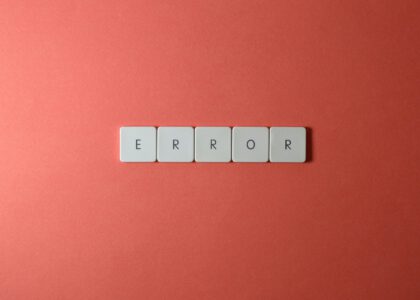Table of Contents
ToggleBreaking the Intermediate Plateau: Why Most Learners Get Stuck
And the proven strategies to break through to fluency
You’ve been learning Spanish for two years. You can order food at restaurants, have basic conversations with natives, and understand most of what you watch on Netflix with subtitles. Yet somehow, you feel… stuck.
Welcome to the intermediate plateau, the graveyard of language learning dreams.
If this sounds familiar, you’re not alone. Most language learners abandon their studies at the intermediate level, despite having invested months or even years into their journey. But why does this happen, and more importantly, how can you break through?
The Intermediate Paradox
The intermediate plateau is particularly cruel because it strikes just when learners feel they’re making real progress. You’ve moved beyond “Hello, my name is…” and can actually communicate. The dopamine hits from early victories – understanding your first full sentence, successfully ordering coffee – have faded into a frustrating sense of stagnation.
Here’s what’s really happening in your brain: the low-hanging fruit is gone.
Why the Plateau Happens
In the beginning, everything is new. Your brain is constantly forming new pathways, and progress feels rapid because you’re moving from 0% to 30% comprehension.
But at the intermediate level, you’re trying to go from 60% to 80% comprehension – a much steeper climb that requires:
- More complex grammatical structures
- Nuanced vocabulary (not just “big” but “enormous,” “gigantic,” “colossal”)
- Cultural context and idioms
- Advanced listening skills for natural speech patterns
The Five Plateau Traps
1. The Comfort Zone Trap
The Problem: You stick to familiar content and conversations.
Why It Happens: Your brain craves efficiency. It’s easier to rewatch “Friends” with Spanish subtitles than to tackle a Spanish podcast about quantum physics.
The Cost: You’re not challenging your brain to grow. You’re maintaining, not advancing.
2. The Grammar Perfectionist Trap
The Problem: You obsess over getting everything grammatically perfect.
Why It Happens: Intermediate learners often become hyper-aware of their mistakes, leading to analysis paralysis.
The Cost: You speak less, practice less, and ultimately progress less.
3. The Passive Learning Trap
The Problem: You consume content but don’t actively engage.
Why It Happens: Watching Netflix feels like learning, but it’s mostly passive input.
The Cost: You understand more than you can produce – the classic “I understand everything but can’t speak” syndrome.
4. The Motivation Decay Trap
The Problem: The initial excitement has worn off, but fluency still feels distant.
Why It Happens: Progress becomes less visible and harder to measure.
The Cost: Inconsistent practice leads to skill decay and further frustration.
5. The Method Stagnation Trap
The Problem: You stick with the same learning methods that got you to intermediate.
Why It Happens: “If it ain’t broke, don’t fix it” mentality.
The Cost: Different levels require different approaches. Beginner methods won’t get you to advanced.
The Plateau-Breaking Playbook
Strategy 1: Embrace the 80/20 Rule
The Principle: 80% comprehensible input, 20% challenging content.
How to Apply:
- If you understand 90% of a Spanish podcast, it’s too easy
- If you understand 40%, it’s too hard
- Sweet spot: 70-80% comprehension with context clues filling the gaps
Action Step: Find content where you understand most of it but encounter 5-10 new words or phrases per session.
Strategy 2: The Production Push
The Problem Solved: Passive learning trap
The Method:
- Week 1-2: Record yourself speaking for 5 minutes daily about your day
- Week 3-4: Summarize articles or videos you’ve consumed
- Week 5-6: Debate topics with yourself (argue both sides)
- Week 7-8: Find conversation partners and practice weekly
Why It Works: Forces active recall and identifies gaps in your knowledge.
Strategy 3: The Specialist Approach
The Concept: Become an expert in one specific domain in your target language.
Examples:
- Spanish: Become fluent in discussing renewable energy
- French: Master cooking terminology and techniques
- German: Dive deep into automotive engineering vocabulary
Benefits:
- Builds confidence through expertise
- Creates natural conversation topics
- Develops advanced vocabulary in context
Strategy 4: The Error Analysis System
The Process:
- Record conversations or writing samples weekly
- Identify patterns in your mistakes
- Create targeted practice for your weak points
- Track improvement over time
Example: If you consistently mess up past tense conjugations, spend two weeks focusing specifically on past tense through stories and conversations.
Strategy 5: The Cultural Immersion Hack
Beyond Language: Learn about culture, history, and current events.
Why It Matters: Language is inseparable from culture. Understanding cultural context dramatically improves comprehension and natural expression.
Practical Steps:
- Follow news sources in your target language
- Learn about historical events that shaped the culture
- Understand humor, sarcasm, and cultural references
The Mindset Shift That Changes Everything
From “I’m Not Good Enough” to “I’m Getting Better”
The biggest breakthrough comes from changing your relationship with mistakes and imperfection.
Old Mindset: “I should be fluent by now. I’m not progressing fast enough.”
New Mindset: “Every conversation, every mistake, every ‘aha’ moment is progress. Fluency is a journey, not a destination.”
Redefine Progress
Instead of measuring: Perfect grammar and accent
Start measuring:
- Comfort level in conversations
- Ability to express complex ideas (even imperfectly)
- Speed of comprehension
- Cultural understanding
- Confidence in using the language
The 90-Day Plateau-Breaking Challenge
Month 1: Foundation Reset
- Week 1: Assess your current level honestly
- Week 2: Identify your specific weak points
- Week 3: Find challenging but comprehensible content
- Week 4: Establish new learning routines
Month 2: Active Engagement
- Week 5-6: Focus on production (speaking/writing)
- Week 7-8: Find conversation partners and practice regularly
Month 3: Specialization & Culture
- Week 9-10: Dive deep into your chosen specialist topic
- Week 11-12: Immerse yourself in cultural content and current events
The Technology Factor
Modern language learning apps often contribute to the plateau problem by:
- Focusing on gamification over genuine challenge
- Providing too much structured, predictable input
- Emphasizing streaks over actual progress
The Solution: Use apps as supplements, not primary learning tools. They’re great for vocabulary review and maintaining streaks, but breaking plateaus requires more dynamic, challenging content.
Success Stories: Real Plateau Breakers
Sarah’s Spanish Breakthrough
The Plateau: Stuck at B1 level for 18 months
The Solution: Started a Spanish-language blog about sustainable living
The Result: Reached B2+ in 6 months through forced production and specialist vocabulary
Marcus’s Mandarin Moment
The Plateau: Could understand but couldn’t speak naturally
The Solution: Joined a Chinese debate club online
The Result: Developed natural speech patterns and cultural understanding
Elena’s English Evolution
The Plateau: Perfect grammar but sounded robotic
The Solution: Started watching standup comedy and practicing humor
The Result: Developed natural intonation and cultural fluency
Your Next Steps
Today:
- Honestly assess where you’re stuck
- Choose one plateau-breaking strategy to implement
- Find content that challenges you at the 80% comprehension level
This Week:
- Record yourself speaking for 5 minutes daily
- Identify your specialist topic
- Find one conversation partner
This Month:
- Implement the full 90-day challenge
- Track your progress weekly
- Celebrate small wins along the way
Remember: every polyglot, every fluent speaker, every language teacher has faced this plateau. The difference between those who break through and those who give up isn’t talent, it’s strategy and persistence.
The plateau isn’t where your language journey ends. It’s where your real language journey begins.
What’s your biggest challenge with the intermediate plateau? Share your experience in the comments below, and let’s break through together.





